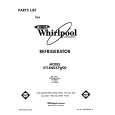|
|
|
Productos
|
|
Información
|
|
Destacado
|
|
|
 |
|
|
No hay comentarios de productos.
USING YOUR DISHWASHER
Hot Water is Essential Loading Your Dishwasher
For good cleaning and drying results, hot water is necessary. The water should be 120°-140°E If, for any reason, the temperature of the water being delivered by the water heater is below 120°F, select the Temp Boost Sensor option to have your dishwasher heat the water, To check water temperature, turn on the hot water faucet nearest the dishwasher. Let water run into a glass in the sink until it is as hot as possible, then check with a candy or meat thermometer. If the temperature at the faucet is below 120°F (49°C), have a qualified person raise the water heater thermostat setting, Before starting the dishwasher, turn on the hot water faucet and let it run un_ the water is hot. Seldom will households have identical dishes; the number and type of articles used will vary daily. Your dishwasher is designed to be flexible and accommodate a wide variety" of dishes and utensils. The following instructions and pictures will help you become familiar with your dishwasher. With experience, you will learn the best arrangement for ),our particular needs. General Recommendations
� Place all items on racks so they are separated and face the center to insure the water spray will reach the soiled surfaces. Do not allow items to extend out of the racks. � Make sure the movement of the upper and lower spray arms is not blocked by items hanging below the lower rack or tall articles in the upper rack. * Insure the free flow of water to the detergent cup by not blocking it with large items. � Larger, flat, lightweight items (such as plastic covers) may be wedged next to the silverware basket or along the sides and back of the racks. � The wash tower rises through the center of the lower rack during the cycle. For the best cleaning results, avoid blocking it or loading tail articles next to it.
Preparing
Dishes
� It is not necessary to rinse dishes before placing them in your Maytag dishwasher, Simply scrape off bones and large pieces of food. The food disposer in your dishwasher can handle a variety of items such as pits, fruit seeds, popcorn and toothpicks. These items will be chopped into small pieces during drain and removed with the drain water. If hard items get into the dishwasher module, you may hear chopping noises during drain. These sounds are normal. � Foods that have been burned onto cooking utensils will need to be scraped or soaked. � Certain foods, such as mustard, mayonnaise, lemon juice, vinegar, salt or dressings may cause stainless steel flatware to rust and pit if allowed to remain in contact with the surface for a period of time. Therefore, it is best to rinse these food soils off stainless steel flatware unless the dishwasher is to be operated soon after loading. � If your dishwasher drains into a food waste disposer, make certain the disposer is completely empty before starting the dishwasher to provide for proper draining.
PAGE3
|
|
 |
> |
|

